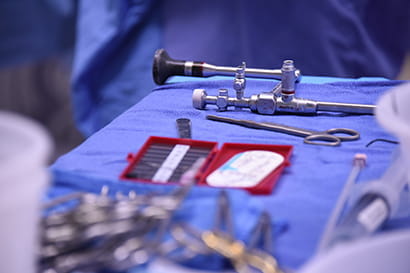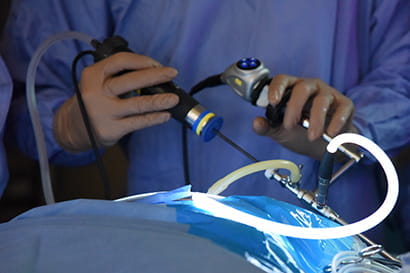Stone disease, known more commonly as kidney stones, occurs when pieces of solid crystals form in the kidneys. About 10 percent of people experience kidney stones at some point in their life, and they can be painful when passed through the ureter and bladder. Endourology faculty experts at Indiana University School of Medicine Department of Urology are finding new ways to remove kidney stones through minimally invasive surgical techniques. They’re also researching how to prevent kidney stones from recurring.
Kidney stones most often occur in people aged 20 to 50, but they can affect individuals of any age. Symptoms may include pain in the side or flank, pain in the lower back or abdomen, pain in the groin, blood in the urine, nausea and vomiting. However, others may never experience symptoms. In rare instances recurrent urinary tract infections can be attributed to kidney stones. While many kidney stones pass through the body on their own, others may get stuck in the ureter or kidney, which can cause pain or kidney damage.
Endourologists can use a variety of treatment options to find and remove stones, as well as prevent their return. IU School of Medicine faculty experts are also studying metabolic management of stones to prevent stones from forming again through diet or medications.

